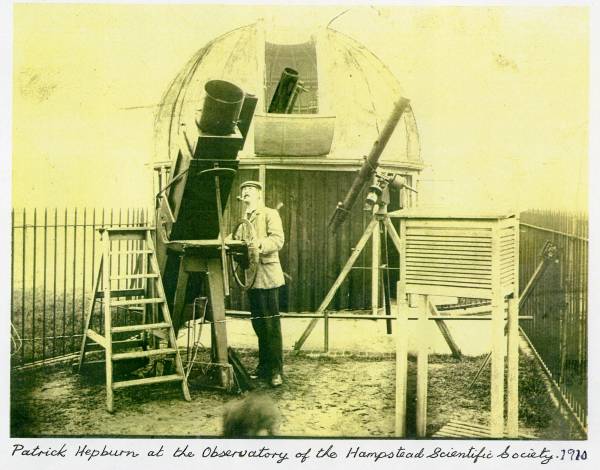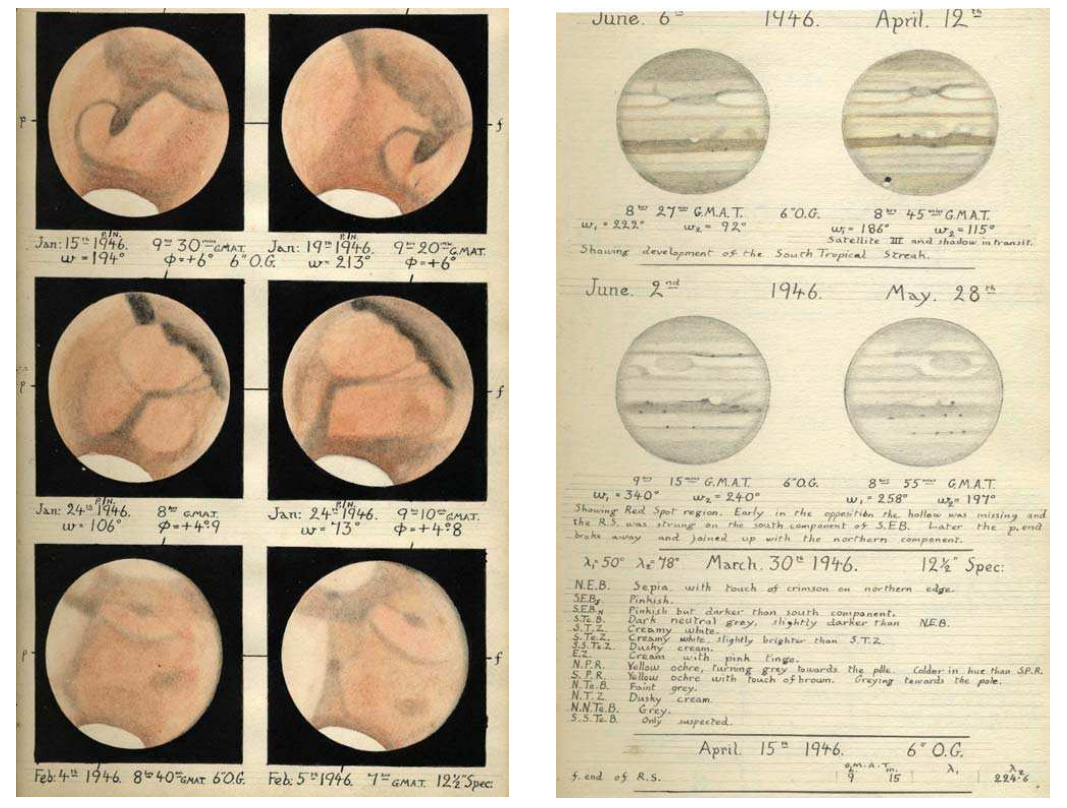
History
Observatory
The roots of the Hampstead Scientific Society go back to Christmas 1898 when P.E.Vizard learned that a Hampstead resident, Colonel Henry Heberden J.P. had a 10.5-inch reflecting telescope that he would be happy to donate to a Society that was prepared to make it available to members of the public. Thus it was that in July 1899 at a public meeting, the Hampstead Astronomical and General Scientific Society was formed. There were many trials and tribulations in the beginning but in 1910 the Observatory, as we know it today, was established, built on top of the newly constructed underground reservoir, the property of the then Metropolitan Water Board, on a site that was the highest point in London.
It was also in 1910 that Patrick Hepburn came on to the scene. Hepburn was a keen amateur astronomer and was described in the Society's history by the late Ben Boltz, as 'a man of demonic energy'. Hepburn and Vizard were the first joint Astronomical Secretaries. 1910 was the year of the return of Halley's Comet but it was rather overshadowed by the Great Daylight Comet of the same year. Halley's Comet was observed from the Observatory in 1910 and again on its return in 1986 when on that occasion, over 1000 members of the public came to see it.

In the early years, the Observatory enjoyed dark skies and many valuable observations were made. Hepburn became the Director of the Saturn section of the British Astronomical Association (BAA) and the Society's 1911 report contains drawings and a map of the surface features of Mars made by members. Over the years many planetary drawings made by members have been submitted to the various observing sections of the BAA. and the Society has an archive of drawings of Mars covering many oppositions from 1911 to the present day. Over the years, many amateur astronomers and even a few professionals had their first introduction to observational astronomy at the Hampstead Observatory.

In the early part of the 20th century it was still possible to make original valuable observations but the Society never neglected its prime duty to allow the public access to the telescope, a duty that it has met for over a century.
During the winter months, from mid September to mid April, the Observatory is open on clear Friday and Saturday evenings from 8.00pm-10.00pm and on Sunday mornings from 11am-1.00pm. Visitors can just 'turn up' and view interesting objects through the fine 6-inch Cooke refractor which was presented to the Society by George Avenell in 1923. Members of the section are always on hand to show visitors such sights as Saturn's rings, Jupiter's cloud belts, the craters and mountains on the Moon and some of the brighter 'deep sky' objects - star clusters, nebulae and galaxies. On Sunday mornings we can safely project an image of the Sun to reveal sunspots and faculae.
Centenary book
As part of the Society's 100th anniversary, a new history of the Society has been published.
The book, based on the earlier volume last published 25 years ago, is a definitive history of the Society from its founding in 1899 up to the present day.
Edited by Philip Eden with contributions from numerous members, the book traces the history of the Society with biographical details of many of the famous, often larger than life, characters who have contributed to our scientific knowledge during the past 100 years.
The A5 volume has 87 pages of text and 4 pages of full colour illustrations. It is written in an easy narrative style.
To obtain your copy, at just £5, plus 50p for postage, please contact the Treasurer.